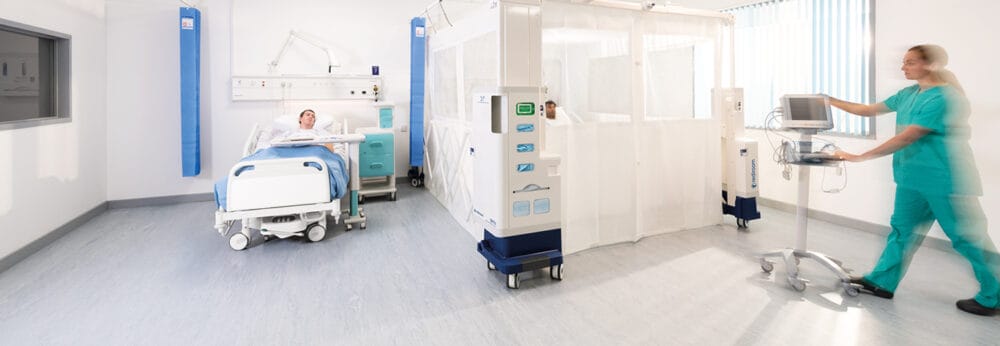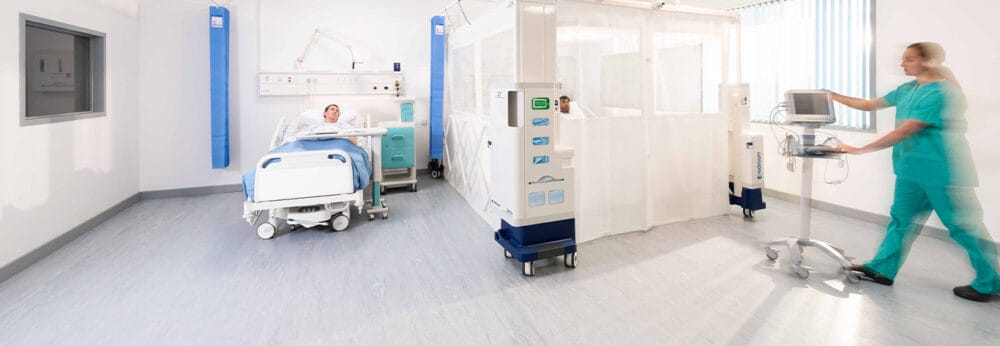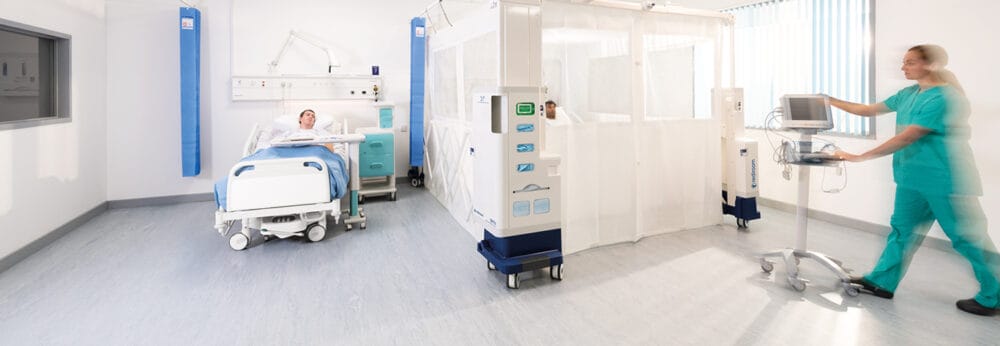Posts Tagged ‘PATIENT ISOLATION’
Hospital-onset COVID-19: how North Lincolnshire & Goole transformed their isolation approach with Rediroom
Hospital-onset COVID-19 cases plummeted by 75% in North Lincolnshire & Goole NHS Foundation Trust after they introduced 30 Redirooms to their admissions and short-stay wards. We catch up with Infection Control Team Leader, Linda Barker, to find out how they did it. “Unless you have a hospital of all private rooms, you never have enough…
Read MorePreventing the spread of HAIs: the need for flexible, rapid isolation in the healthcare environment
In this article we discuss the strain on isolation capacity in hospitals, the financial impact of hospital acquired infections (HAIs) and how Rediroom is an effective isolation solution. Why do we need to isolate in hospitals? Isolation of patients with communicable illnesses is a key aspect to preventing HAIs, alongside regular, thorough cleaning and disinfection…
Read MoreInternational launch of Rediroom, the world’s first portable isolation solution
Following initial sales in Japan, we’re now launching Rediroom in key territories across Europe, MEA, Asia, the Americas and Oceania. Having already been adopted by 30 NHS hospitals, we’re delighted to share we’re approaching our 400th order for Rediroom. Read on to find out more about Rediroom’s international launch. We’re thrilled to announce the international…
Read MoreThe cost-effectiveness of temporary patient isolation rooms in reducing HCAI
In our latest research article, we review recent Australian studies examining the functional characteristics of Rediroom, a mobile room designed to provide flexible, instant isolation for patients under contact and droplet precautions. Cost-effectiveness of Rediroom A recently published study explores the cost-effectiveness of Rediroom in reducing the risk of HCAI. The study team made an estimate of…
Read MoreHow Rediroom can improve patient flow and reduce the risk of HCAIs
In our latest article, we discuss how Rediroom increases the options for IPC teams and bed managers through placing patients in the most suitable accommodation, which in turn, reduces the risk of HCAIs and improves patient flow. The Rediroom has been designed to offer the middle ground between single rooms and multi-occupancy bays – providing many of…
Read MorePersistent shedding of COVID-19 – what does this mean?
Several epidemiological studies have shown that the shedding of the SARS-CoV-2 virus that causes COVID-19 can continue for many days after symptoms resolve. What does this mean? Do people remain infectious after their symptoms resolve? The answer isn’t clear, but it seems that people are most infectious at the start of their symptoms, and much less…
Read MoreMore single rooms = less MDR Gram-negatives in the ICU
An 11 year Dutch study provides compelling evidence that a move to single rooms from multi-occupancy bays dramatically reduced the burden of multidrug-resistant (MDR) Gram-negative bacteria in the ICU. The study was centred in a 16 bed ICU in The Netherlands. From 2002-2009, the ICU was composed of a mixture of multi-occupancy bays and single rooms. Then,…
Read MoreRediRoom put through its paces
An Australian study has evaluated various functional characteristics of the RediRoom, a temporary isolation room designed for single patient use. The mixed methods approach involved video recording, interviews, and objective temperature and humidity measurements within a crossover intervention study, concluding that the RediRoom had similar functional performance to performing patient care in an open plan area.…
Read MoreWatch out: C. difficile about (and you may not know it)
There has been some recent discussion on whether we should implement screening for asymptomatic carriage of C. difficile. Whilst there is some evidence that cross-transmission of C. difficile from symptomatic cases is rare (in English hospitals, at least), a recent study shows that asymptomatic carriers are an important source of in-hospital transmission of C. difficile. The study was performed over 4 months in a Danish…
Read MoreSingle room, anyone?
There has been lots of debate over many years about the extent to which hospitals should provide single rooms for patients. Should every patient have a single room for the sake of privacy? Would this help to reduce HCAI? And would it be safe even if it did? A recent review suggests that more single rooms equals…
Read More






